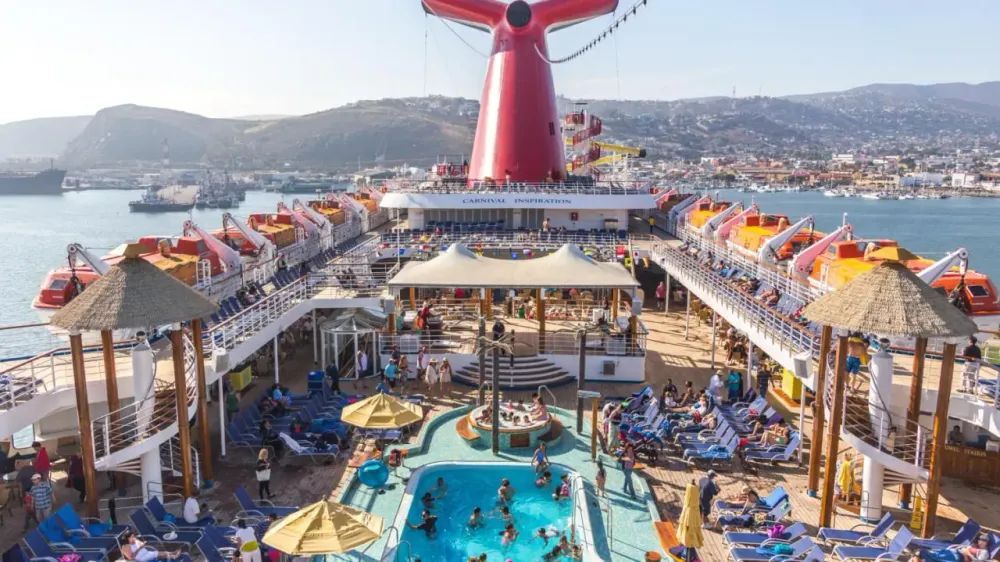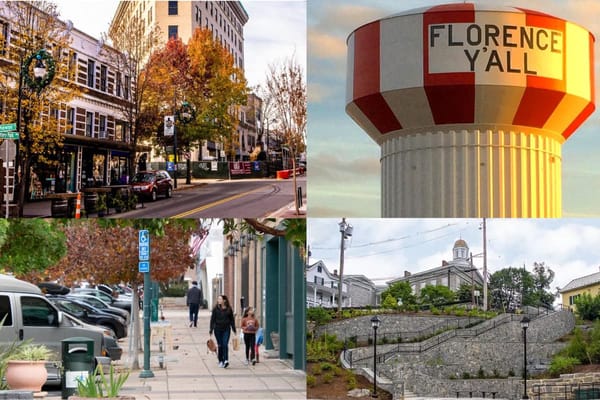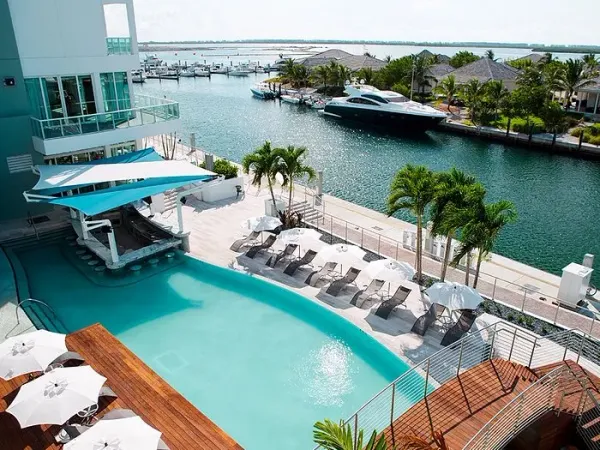20 Things To Do In Ensenada To Embrace Your Inner Muchacho(a)
Ensenada isn’t polished for tourists—it never had to be. This Pacific port city has thrived on its own terms for over two centuries. Founded in the early 1800s as a supply outpost for Spanish missions, Ensenada grew into a vital harbor for explorers, fishermen, and Prohibition-era smugglers. Today, it’s Baja California’s third-largest city and the heartbeat of Mexico’s wine country. But Ensenada is more than just a gateway to Valle de Guadalupe.
It’s a city where old cantinas, working docks, and coastal blowholes share space with boutique wineries, cultural hubs, and eco-parks. The city’s history isn’t tucked away in museums (though they’re here too)—it’s felt in the rhythms of Avenida López Mateos, the salt spray of La Bufadora, and the artisan markets surrounding every landmark. Ensenada’s draw isn’t in mega-resorts or cookie-cutter tours. It’s in real experiences—wine tastings at family-run vineyards, street tacos sold beside centuries-old churches, and outdoor adventures that don’t require velvet ropes or timed tickets.
This guide is built for travelers who want more than a quick port stop. It’s for those ready to step into a city that’s still working, still creating, and still very much alive.
1. Explore La Bufadora
📍 Location: Punta Banda Peninsula, approx. 20 miles south of downtown Ensenada
Fun Fact:
La Bufadora is one of the largest marine geysers in the world, with water blasts reaching up to 100 feet in the air during peak tides.
An exquisite marine geyser, La Bufadora is one of the most important tourist attractions in Ensenada, Mexico. Located on the Punta Banda Peninsula south of downtown Ensenada, this place is surrounded by dramatic seawater spouts that can reach heights of up to 100 feet and will offer views that are both awe-inspiring and invigorating.
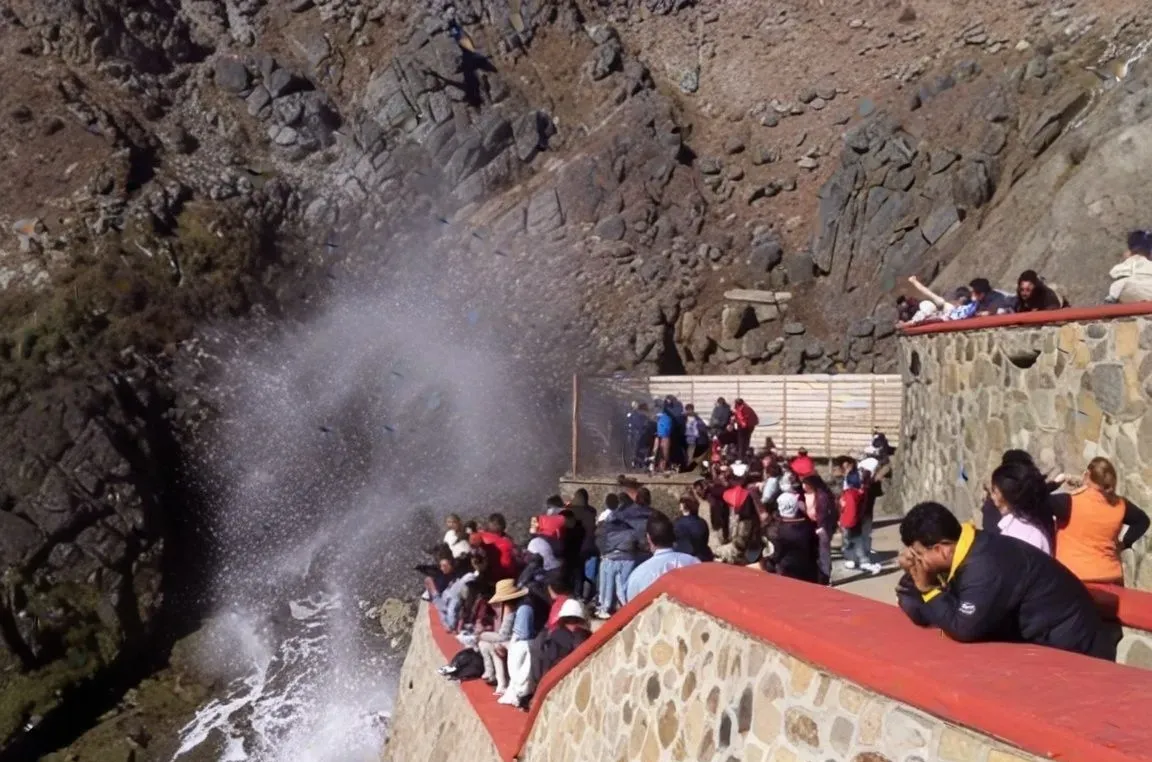
La Bufadora is a natural blowhole that’s been captivating visitors long before Instagram made it famous. Positioned on the Punta Banda Peninsula, roughly 17 miles south of Ensenada, it’s considered one of the largest marine geysers in the world. The phenomenon occurs when waves channel into a partially submerged sea cave, compressing air and water that shoots upwards, sometimes reaching heights of 100 feet.
Unlike Old Faithful, La Bufadora isn’t on a timer—it’s powered by the pulse of the Pacific, making every burst unique. The surrounding area is a bustling marketplace, with vendors lining the walkway selling local crafts, seafood snacks like fresh ceviche, and Baja’s iconic “churros rellenos.” Though there’s no entry fee, parking and shuttle services may charge a small fee. The viewing platform allows safe, close access, but be warned—the “splash zone” lives up to its name. For visitors, La Bufadora offers a blend of raw natural power and lively local culture, making it one of Ensenada’s most iconic stops.
Important Information:
- Opening Hours: Open daily; busiest between 10:00 a.m. – 4:00 p.m.
- Accessibility: Walkway to the blowhole is paved but can be crowded and uneven in spots
- Parking: Paid parking available near the entrance; rates vary
- Amenities: Dozens of vendor stalls, food stands, souvenir shops, and restrooms nearby
- Tips: Go during high tide for the most dramatic spouts; weekdays are less crowded than weekends
2. Visit the Ensenada Fish Market (Mercado de Mariscos)
📍 Location: Corner of Avenida Lopez Mateos and Avenida Miramar, central Ensenada
Fun Fact:
This market isn’t just for seafood lovers—it's also a local institution where generations of fishermen have sold their fresh catch since the 1950s.
The majestic Ensenada fish market, or Mercado de Mariscos, has to be on the list of things to do for anyone who goes to downtown Ensenada, Mexico. The colorful market really manifests the local culture, providing a sensory overload of sights, sounds, and smells, pure Ensenada! If you walk through the market, you will be greeted by friendly vendors eager to show off their day's fresh catch. The truly lively atmosphere is a buzz with locals and tourists alike seeking what is freshest in seawater.
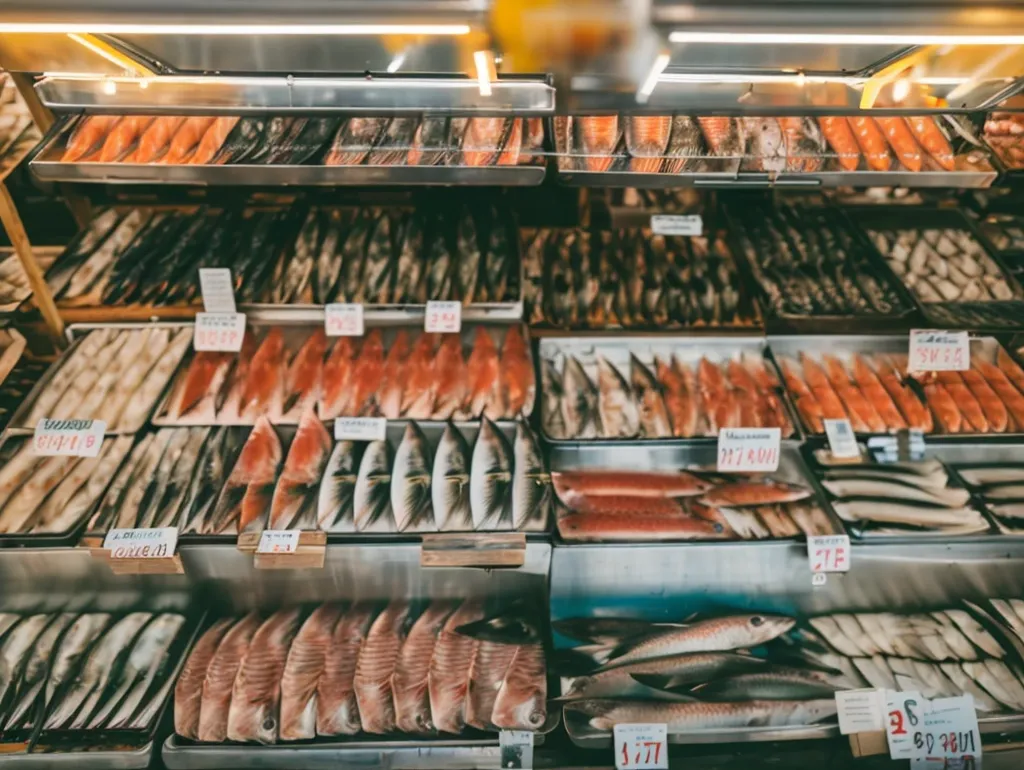
The sheer assortment of seafood available for purchase at the Ensenada fish market is staggering. From shiny shrimp and fatty scallops to red snapper and tuna to the ever-famous Baja lobster, the fish market caters to any palate. The oysters, clams, and mussels are the pride of the market; they are often shucked and served up fresh right on the spot.
The Ensenada fish market is not just about the shopping, and the fresh seafood is an experience! The best way to enjoy it is to get there very early while the market is at its liveliest, and to be able to grab the best seafood. Be sure to sample prepared items from vendors as well. Tacos de Pescado, i.e., fish tacos, are a local favorite and a tasty way to enjoy some fresh seafood in the area. Grab yourself a cold cerveza (beer) to wash it down as you enjoy the lively atmosphere of this fascinating marketplace.
Important Information:
- Opening Hours: Daily, generally from 8:00 a.m. to late afternoon
- Accessibility: Outdoor market with level walking paths; can be tight in high-traffic areas
- Parking: Street parking nearby, often busy; walking or rideshare recommended
- Amenities: Fresh seafood stalls, ready-to-eat ceviche stands, shaded seating nearby
- Tips: Try the marlin tacos or abalone if they’re in season; bring cash for easier purchases
3. Wine Tasting in Valle de Guadalupe
📍 Location: Ruta del Vino, Valle de Guadalupe, approx. 30 minutes northeast of Ensenada
Fun Fact:
Often called the "Napa Valley of Mexico," Valle de Guadalupe produces over 70% of the country’s wine and is home to more than 100 wineries.
Lying just northeast of the town of Ensenada in Mexico, Valle de Guadalupe has become one of the most exciting wine regions in North America. The breathtaking landscape, eclecticism in winemaking, and lively local culture make this wine region a must-see.
The history of the wine industry here is rich and ready for growth. Valle de Guadalupe is changing from an unknown wine area to a celebrity wine destination in its own right, alongside the likes of Napa Valley and Tuscany. With more than a hundred wineries, Valle de Guadalupe produces a diversity of wines, from big, robust reds to elegant, crisp whites. Blessed with a Mediterranean climate, combined with the unique characteristics of terroir, these conditions work together to produce high-quality wines.
When planning a winery tour in Valle de Guadalupe, select wineries shine. Finca La Carrodilla is famous for organic wines and breathtaking rooftop gardens. Vena Cava promotes green practices while letting its guests taste boats renovated for this purpose. Casa del Diablo Ensenada allows for a cozy atmosphere of its private wine tasting along with good wines. Each winery brings its own unique style to the wine-tasting experience, offering diversity and excitement.
Important Information:
- Opening Hours: Most wineries open daily from 11:00 a.m. – 5:00 p.m.; some require reservations
- Accessibility: Varies by winery; newer venues tend to be more accessible
- Parking: Free parking at most wineries
- Amenities: Wine tasting rooms, farm-to-table restaurants, boutique lodging, scenic vineyard views
- Tips: Book tastings or tours in advance, especially on weekends; designate a driver or hire a local wine shuttle
4. Relax at Playa Hermosa
📍 Location: Blvd. Costero & Calle Playa Hermosa, south of downtown Ensenada
Fun Fact:
Despite its name meaning "Beautiful Beach," Playa Hermosa is more of a local favorite than a tourist hotspot—ideal for a laid-back, crowd-free vibe.
Playa Hermosa is perhaps the most tranquil and scenic of Ensenada's many beaches: it is only a short drive away from downtown. Beautiful, this beach is the perfect complement to a restful recreational trip and a good spot to visit when planning things to do in Ensenada.
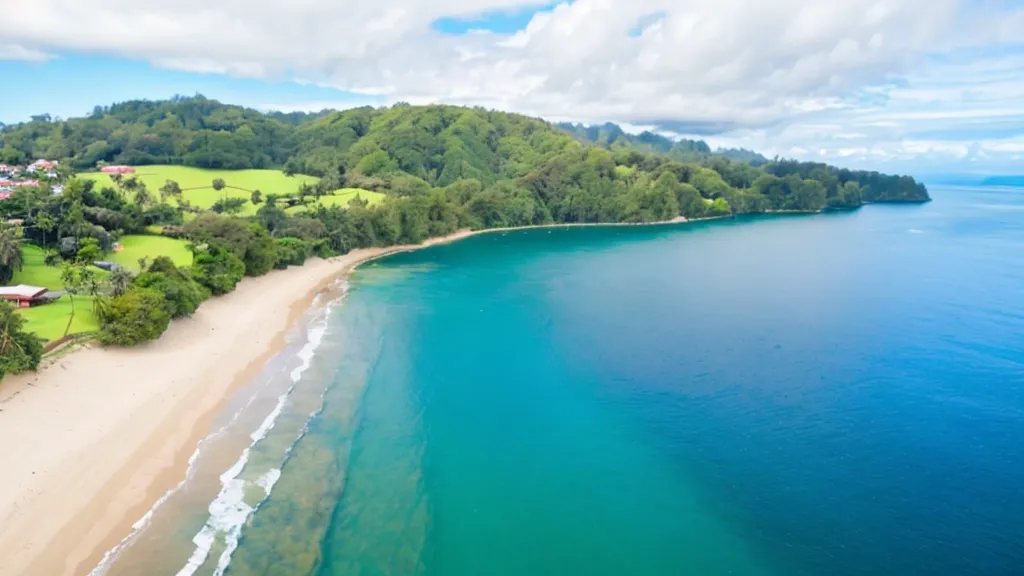
For capturing golden sands and sunny afternoon daylight within the smooth and cresting waters of the sea, this is most definitely a location for relaxation and swimming. The waves are normally mild, so they can be used by parents and children as well as people who are new to swimming. A somewhat bright beach ambiance bounces upon basking under the Mexican sun. Not far from humans, swimming beach enthusiasts will be seen playing beach volleyball or football.
Playa Hermosa is not just about the beauty of natural scenery; it also has much to offer in terms of amenities to make your beach day even better. Among them are clean restrooms, showers, and a good parking space for easy and comfortable visits. Volleyball nets and rental capacities are available for the more active; thus, a more fun-filled experience.
Important Information:
- Opening Hours: Open 24/7; lifeguards on duty during daytime hours
- Accessibility: Wide beachfront with ramps and paved access near the boardwalk
- Parking: Free street parking and nearby lots available
- Amenities: Public restrooms, showers, picnic tables, volleyball courts, and food vendors
- Tips: Great for sunset walks or morning jogs; weekends get busier with local families
5. ATV Ensenada Tours
For adrenaline-seekers, ATV Ensenada Tours offers a high-octane way to explore Baja’s rugged landscapes. These guided tours take riders off-road through dirt trails, canyons, and coastal paths that typical city tours can’t reach. The fleet includes single and double-seater ATVs, all equipped for handling Baja’s diverse terrain—from sandy beaches to rocky hills. Routes vary in intensity, with beginner-friendly scenic rides and more challenging courses for experienced riders.
Safety is a priority, with pre-ride orientations and all necessary gear provided. Tours often include photo stops at cliffside viewpoints, desert plateaus, and even secluded beach stretches where riders can break away from the crowd. ATV Ensenada Tours isn’t about racing in circles—it’s about getting into the wild parts of Ensenada with speed, grit, and a serious dose of fun.
6. Visit the Riviera del Pacifico Cultural Center
📍 Location: Blvd. Costero #1300, Zona Centro, Ensenada
Fun Fact:
This former 1930s casino once attracted Hollywood stars and bootleggers during Prohibition—and today it hosts art exhibits, weddings, and festivals.
A visit to the Riviera del Pacifico Cultural Center should be considered a must-see while in Ensenada, Mexico. This historical jewel, literally in the city centre of Ensenada, shows the fascinating past of the city and is a contemporary cultural experience for its visitors. The Riviera del Pacifico was built in the 1930s as a luxurious hotel and casino. Hollywood stars and the elite soon flocked to this distinguished landmark in the history of Ensenada. Today, it is a cultural center that preserves its rich heritage and affords tourists a variety of attractions.
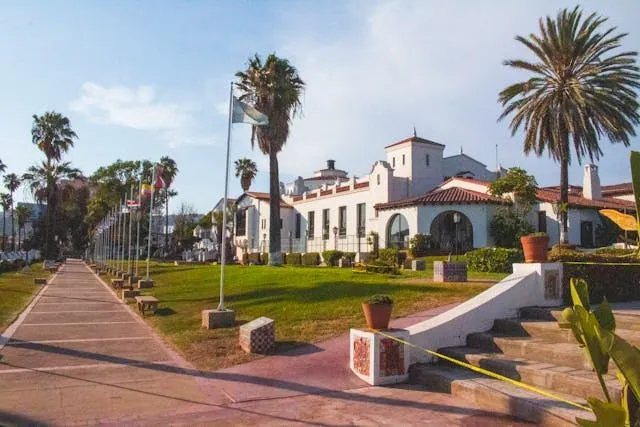
At the present time, exhibitions held at Riviera del Pacifico display art and culture from Ensenada and Baja California. Visitors may enjoy either some galleries with contemporary and traditional Mexican art or other rotating exhibits, which feature local history and notable cultural events. For those looking for a full-throttle cultural experience, the center regularly offers concerts, theater, and festivals, making it one of the prime things to do in Ensenada.
Important Information:
- Opening Hours: Tues–Sun, 10:00 a.m. – 6:00 p.m.
- Accessibility: Fully accessible building with ramps and paved walkways
- Parking: Free on-site parking available
- Amenities: Museum exhibits, gardens, gift shop, guided tours, and event space
- Tips: Don’t miss the murals in the main hall and the peaceful outdoor gardens; English tours are sometimes available
7. Discover the Museo de Historia
📍 Location: Inside the Riviera Cultural Center complex, Blvd. Costero #1300
Fun Fact:
The museum explores Ensenada’s history from prehistoric indigenous cultures through the Mission period, Russian immigrants, and modern development.
A museum located in Ensenada, Mexico, the Museo de Historia gives a captivating experience of travel through time, making it truly worth visiting during your time in downtown Ensenada. The museum exhibits present an overview of the rich history from indigenous culture to the present with impressive displays of ancient artifacts, remnants from the colonial times, and more recent items. The museum serves ideally for anyone interested in visiting an Ensenada attraction and wants to know about its highlights.
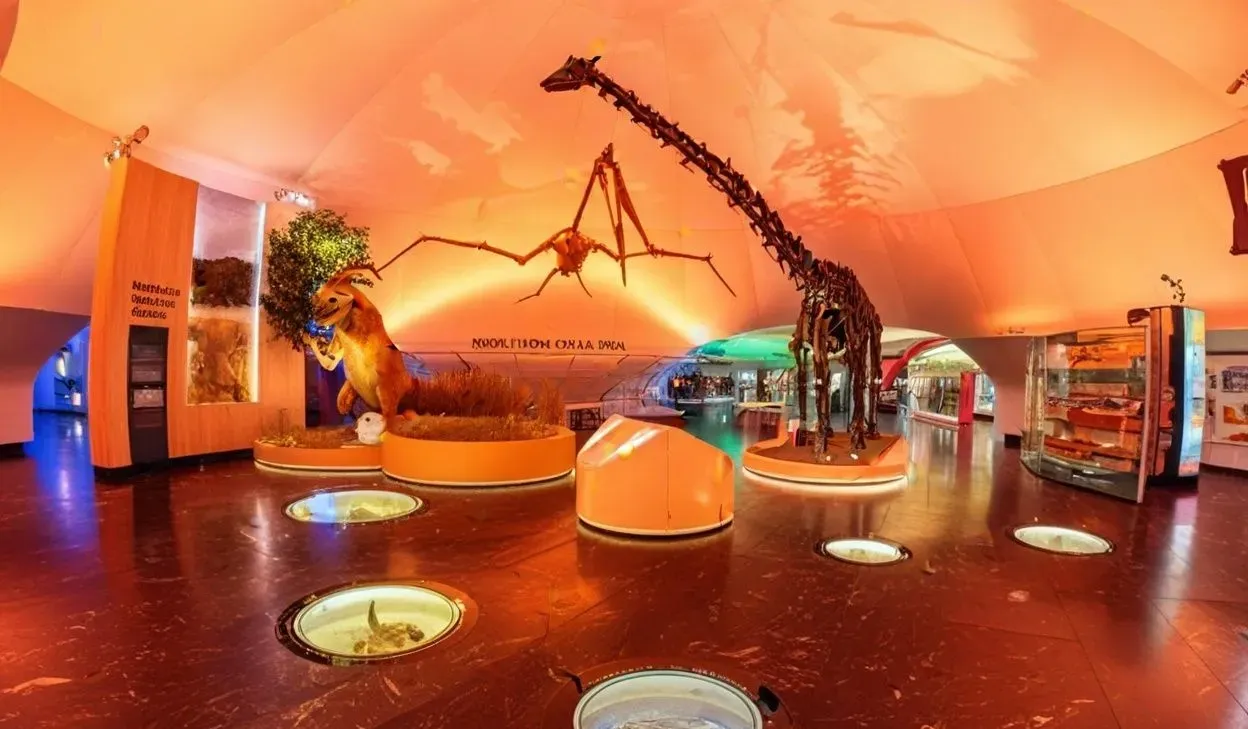
Among the key features of the Museo de Historia is its collection of historical artifacts. These include indigenous tools, pottery, and ceremonial items, which give local inhabitants an insight into their past. Other sections of the museum display Spanish colonial items: for instance, antique weapons, religious objects, and documents. These offer vivid insight into the cultural and historical transformations that have molded Ensenada over the centuries.
Important Information:
- Opening Hours: Tues–Sun, 10:00 a.m. – 5:00 p.m.
- Accessibility: Wheelchair accessible; exhibits mostly on one floor
- Parking: Shared with the Riviera Cultural Center
- Amenities: Bilingual exhibit signs, gift shop, cultural workshops
- Tips: Small but informative—plan 30–60 minutes; pair with a visit to the cultural center’s gardens
8. El Salto Canyon & Waterfall
El Salto Canyon & Waterfall is one of Ensenada’s best-kept secrets for outdoor enthusiasts. Located about 20 miles south of the city along the wine route, this rugged canyon offers hiking, rock climbing, and a seasonal waterfall that cascades into a natural pool during the rainy months.

While the waterfall itself isn’t massive, the canyon’s towering rock walls and desert-meets-mountain terrain provide an adventure setting far removed from the coastal tourist zones. The area is popular with local climbers who tackle its challenging granite faces, while casual hikers can follow well-marked trails to scenic overlooks. The site also features rustic camping spots for those wanting an overnight nature escape. El Salto isn’t a manicured park—it’s raw Baja wilderness, where the payoff is solitude and scenery. Visitors should come prepared with water, proper footwear, and a sense of adventure.
9. Rancho Los Bandidos
Rancho Los Bandidos offers a slice of authentic Baja horseback riding, combining panoramic views of the Ensenada coastline with a family-owned ranch experience. Situated on the hills above the city, the ranch provides guided horseback tours along mountain trails that overlook the Pacific and Salsipuedes Bay.
The rides are designed for beginners and experienced riders alike, with gentle, well-trained horses and bilingual guides who share local history and stories of the region. The ranch is not a mass tourism operation—it’s personal, small-scale, and hands-on.
After the ride, visitors can relax at the ranch house with homemade tortillas, salsas, and locally brewed beers. The combination of stunning natural scenery, friendly hosts, and a down-to-earth atmosphere makes Rancho Los Bandidos a favorite for those wanting to experience Baja’s ranchero culture without the gloss of tourist traps.
10. Bodegas de Santo Tomás
Bodegas de Santo Tomás isn’t just a winery—it’s the birthplace of Baja California’s wine industry. Established in 1888, it’s the oldest continuously operating winery in the region, setting the standard for what would become Mexico’s premier wine route: Valle de Guadalupe. The original winery in downtown Ensenada offers tours that walk you through historic barrel rooms, antique machinery, and tasting sessions that highlight varietals like Barbera, Tempranillo, and Chenin Blanc. What makes Santo Tomás unique is its blend of tradition and innovation.
While they preserve their century-old fermentation vats and underground cellars, their vineyards in Valle de Santo Tomás now implement modern, sustainable viticulture practices. The tasting room experience is polished but approachable, with sommeliers who guide you through the nuances of Baja terroir. Cultural events, including art exhibitions and intimate concerts, are often hosted on-site, making it a dynamic cultural hub, not just a stop for wine enthusiasts. For anyone looking to understand the roots of Mexican winemaking, Bodegas de Santo Tomás is essential.
11. Avenida Adolfo López Mateos (Ensenada’s Main Drag)
Avenida Adolfo López Mateos, often simply called “Calle Primera” or First Street, is Ensenada’s main artery for commerce, culture, and street life. This stretch is lined with a mix of local boutiques, souvenir shops, artisan markets, and a diverse food scene ranging from street-side fish tacos to upscale seafood restaurants. Historic landmarks like Hussong’s Cantina, Baja’s oldest bar (since 1892), sit shoulder-to-shoulder with modern craft beer taprooms.
The avenue is also a hub for Ensenada’s famous “carnitas de camarón” and “mariscos estilo Baja.” On weekends, street performers, mariachi bands, and pop-up vendors amplify the atmosphere. The street is pedestrian-friendly, allowing visitors to stroll while ducking into shops for handmade textiles, leather goods, and locally produced wines and tequilas. Avenida Adolfo López Mateos isn’t a polished tourist zone—it’s a living slice of Ensenada’s working city, where locals and visitors share the sidewalks and the rhythm of daily life. For first-timers, this street is the best introduction to the city’s energy and culture.
12. Pai Pai Ecotourism Park
Pai Pai Ecotourism Park isn’t your typical zoo—it’s an interactive wildlife experience built around conservation, education, and hands-on encounters. Situated in the heart of Valle de Guadalupe, this ecological park allows visitors to get up close with animals like sloths, lemurs, macaws, and big cats under the supervision of trained guides. While its exotic animal experiences—such as feeding jaguar cubs—grab headlines, Pai Pai also emphasizes native species and sustainable practices.
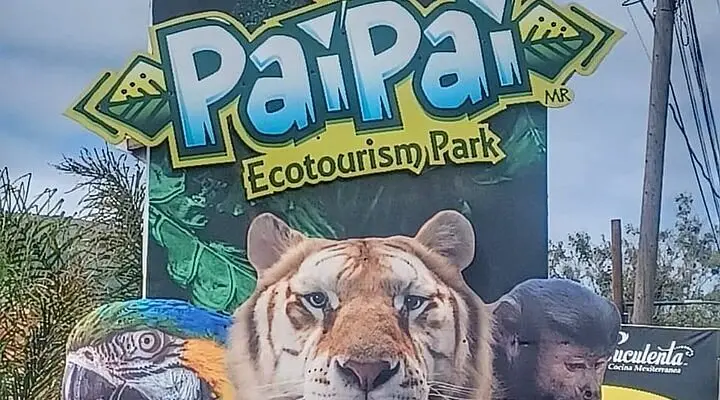
Walking trails weave through desert landscapes, offering views of Baja’s natural flora. The park operates breeding programs for endangered species and runs educational workshops for schools and families. Beyond wildlife, Pai Pai includes adventure activities like zip lines and rope bridges, catering to both thrill-seekers and eco-tourists. For those interested in agro-tourism, their on-site organic garden supplies ingredients for Pai Pai’s farm-to-table café. It’s a full-day destination that blends adrenaline, education, and nature in one of Baja’s most scenic settings.
13. La Casa de Doña Lupe
La Casa de Doña Lupe is a Valle de Guadalupe institution—one of the region’s oldest family-run wineries, blending organic farming with artisan traditions. Founded in 1968, Doña Lupe was a pioneer in Baja’s boutique wine movement, long before the area became Mexico’s Napa. The winery’s rustic tasting room, shaded by vine-covered pergolas, offers a laid-back, unpretentious atmosphere where guests can sample organic wines, homemade jams, salsas, olive oils, and wood-fired pizzas crafted from ingredients grown on-site.
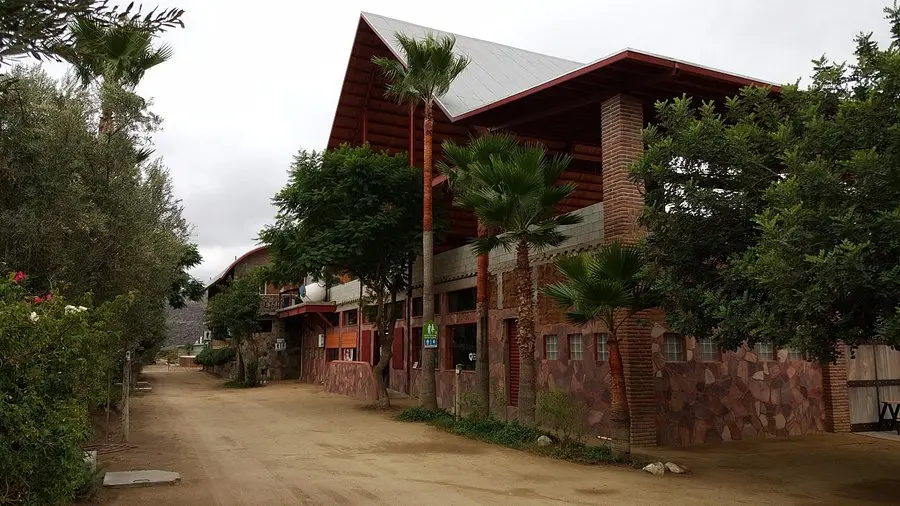
Standouts include their Tempranillo and Nebbiolo blends, along with fruit-infused wines that showcase Baja’s agricultural richness. Unlike larger wineries, the charm here is in its homespun feel—family recipes, hand-labeled bottles, and a staff that often includes Doña Lupe’s own descendants. Artisan markets on weekends bring in local artists and musicians, turning a wine stop into a cultural gathering. La Casa de Doña Lupe isn’t about wine snobbery—it’s about community, craftsmanship, and a deep connection to the land.
14. Hussong’s Cantina
Hussong’s Cantina is Baja California’s oldest and most legendary bar, open since 1892. Rumored to be the birthplace of the original Margarita cocktail, this Ensenada staple has hosted everyone from local fishermen to Hollywood stars. The cantina retains its old-school charm with sawdust-covered floors, swinging saloon doors, and walls plastered with decades of stickers, photos, and memorabilia.
Live norteño bands keep the atmosphere lively, while bartenders pour Margaritas with the same no-frills recipe that made the place famous: tequila, lime juice, and a splash of Cointreau. Beyond the drinks, Hussong’s is a piece of living history—a survivor of Prohibition-era smuggling, naval rowdiness, and modern-day tourism waves. It’s not polished for tourists. It’s raw, loud, and unapologetically authentic. For visitors who want to experience Ensenada’s nightlife legacy without falling into a tourist trap, Hussong’s is a rite of passage.
15. Casa Magoni Winery
Casa Magoni is a standout in Valle de Guadalupe, blending Italian winemaking heritage with Baja’s bold terroir. Founded by Camillo Magoni, a pioneer of Baja’s wine scene and former winemaker for L.A. Cetto, Casa Magoni is known for its innovative blends and experimental varietals. Unlike many wineries in the region, Magoni focuses on lesser-known grapes like Fiano, Aglianico, and Piemontese varietals, reflecting the founder’s northern Italian roots. The tasting experience here is personal and unhurried.
Visitors are guided through small-batch tastings, often poured by staff members who’ve worked directly in the vineyard. The estate’s minimalist architecture—wood, glass, and vineyard views—keeps the focus on the wine. Their blends of Mediterranean and Baja grapes have earned accolades for pushing the region’s boundaries. Casa Magoni isn’t about mass production; it’s a winemaker’s winery, where innovation and craftsmanship take precedence over volume. For wine enthusiasts seeking something beyond the typical Nebbiolo and Tempranillo found across the valley, Casa Magoni is a must-visit.
16. Centro Social, Cívico y Cultural Riviera de Ensenada
The Riviera Cultural Center isn’t just a landmark—it’s the living room of Ensenada. Originally opened in 1930 as a glamorous hotel and casino frequented by celebrities during Prohibition, today it functions as the city’s cultural heartbeat. The white stucco walls, red-tile roofs, and grand courtyards reflect Spanish Colonial Revival architecture at its finest. Inside, murals by renowned Baja artist Alfredo Ramos Martínez add depth to the building’s storied past.
The center now hosts art exhibitions, concerts, literary events, and community workshops, offering a year-round calendar of cultural programming. Beyond the main halls, visitors can stroll the lush gardens, lined with native flora and panoramic views of the Ensenada coastline. It’s also home to a small but respected Wine Museum, giving visitors an introduction to Baja’s viticulture before venturing into the Valle de Guadalupe. For those seeking a blend of history, art, and local community life, the Riviera Cultural Center is an essential stop.
17. Ventana al Mar
Ventana al Mar (“Window to the Sea”) is Ensenada’s premier oceanfront park, offering sweeping views of the Pacific, open green spaces, and a breezy, laid-back vibe that locals and visitors alike gravitate towards. Anchored by the monumental Mexican Flag—one of the largest flags in the country—the park serves as a gathering point for morning joggers, evening strollers, and weekend family picnics. The malecón (boardwalk) stretches along the waterfront, dotted with public art installations, fountains, and shaded benches.

From the edge, you can watch fishing boats and cruise ships dock, or catch local street performers entertaining the casual crowds. Seasonal markets and cultural festivals often spill into the park, making it a flexible space for community events. Ventana al Mar isn’t a tourist trap. It’s where Ensenada breathes—simple, scenic, and deeply tied to the city’s rhythm. For travelers looking for a relaxed, panoramic pause in their itinerary, this park is a no-brainer.
18. Caracol Centro Científico y Cultural (Caracol Science Museum)
The Caracol Science Museum is Ensenada’s gateway to interactive science and environmental education. Designed as a family-friendly learning center, the museum features hands-on exhibits that explore marine biology, renewable energy, and Baja California’s unique ecosystems. Its location near the harbor makes it a strategic stop for visitors curious about the Pacific’s role in Ensenada’s economy and research culture.
Highlights include a virtual deep-sea dive experience, a planetarium, and live science demonstrations geared toward children. The center also hosts rotating exhibitions on topics like climate change, sustainable fishing, and oceanography, often collaborating with local universities and research institutes. For travelers, Caracol offers a smart, engaging alternative to the usual tourist circuit—especially valuable for families or science enthusiasts wanting context behind Baja’s rich natural world. It’s education without boredom, blending fun with meaningful insights.
19. Museo Histórico Regional de Ensenada
Housed in a former military barracks dating back to 1886, the Museo Histórico Regional is a deep dive into Ensenada’s layered past. Exhibits cover the city’s transition from indigenous Kumeyaay settlements to Spanish missions, to its days as a key port for explorers, traders, and Prohibition-era smugglers. The building itself is part of the story, with thick adobe walls and period architecture offering a tangible sense of Baja’s frontier days.
Visitors can explore artifacts ranging from prehistoric tools to 19th-century maritime equipment. Informational plaques are bilingual, making the museum accessible to international guests. It’s not a flashy, high-tech exhibit, but its raw authenticity and well-curated displays make it an essential stop for those wanting to understand Ensenada beyond its surface attractions.
20. Museo de Historia (Ensenada History Museum)
The Museo de Historia offers a broader lens on Baja California’s cultural evolution, focusing not just on Ensenada but the wider region. Its exhibits cover thousands of years—from early indigenous cultures and Spanish colonization to modern industrial developments. The museum is known for its detailed maps, archival photographs, and multimedia presentations that trace Baja’s geopolitical shifts. A section is dedicated to the California Gold Rush era, highlighting how Ensenada became a supply hub during the 19th-century mining boom.

Temporary exhibitions often focus on regional crafts, local artists, and ongoing conservation efforts. Unlike the more localized Regional Museum, Museo de Historia provides the big-picture narrative, connecting Ensenada’s story to Baja’s greater historical arc. For visitors wanting a comprehensive understanding of the region’s timeline, this museum ties it all together.
Conclusion
While well within its nature, Ensenada, Mexico, has an abundance of attractions unique to your personal experience. Every single Ensenada beach - whether just from the glorious beach photograph - bursts with activity, and even the Ensenada beach, from which pictures fall from the eyes, promises a lively shopping experience downtown for all. The exciting culture of Ensenada and its somewhat picturesque scenes make this place an ideal getaway for a weekend or a longer stay.
To put it shortly, Ensenada is much more than just a beach destination. Its diversified attractions, more than historic downtown Ensenada and the undulating rhythms of the tranquil Ensenada beaches, can make the experience truly memorable. Be it shopping in the City of Latinos, visiting historical sites like Casa del Diablo, or enjoying a myriad of Ensenada excursions, this pleasing little city offers an alternative experience for every traveler.
So, pack your bags and get ready to discover the many wonders of Ensenada, Mexico. Well, Karta might offer some fantastic deals for upcoming bookings on vacation rentals in Ensenada in case you're looking for a visit soon!
FAQ
1. What are some of the best outdoor activities in Ensenada?
Ensenada offers plenty of exciting outdoor activities. For adventure seekers, exploring El Salto Canyon with its challenging hiking trails and beautiful waterfall views is a great choice. Nature lovers might enjoy a more relaxed stroll through El Jardin de Tara in the ecological park of Cañon de Doña Petra, which features a prominent sculpture and scenic ocean views.
2. What cultural experiences should I be aware of in Ensenada?
Ensenada is rich in cultural experiences. You can visit the cultural center housed in the former Riviera del Pacifico hotel for various arts, music, and historical exhibitions. The Templo De San José also offers insight into the city’s religious heritage and architectural beauty.
3. Where can I experience local wine and dining in Ensenada?
The Valle de Guadalupe, near Ensenada, is essential for wine enthusiasts, with many vineyards offering wine tastings. For dining, places like Hussong’s Cantina provide a lively atmosphere with traditional Mexican drinks and music.
4. Are there unique adventures to be had in Ensenada?
Yes, Ensenada is full of unique adventures. Horseback riding through scenic landscapes at Rancho Los Bandidos and thrilling zip-line tours at Las Cañadas Canopy Tour offers breathtaking views and exciting experiences.
5. What are some family-friendly activities in Ensenada?
For families, a visit to La Bufadora, one of the largest marine geysers, is highly recommended for its impressive ocean sprays. The city also boasts various beaches and parks perfect for family outings.


